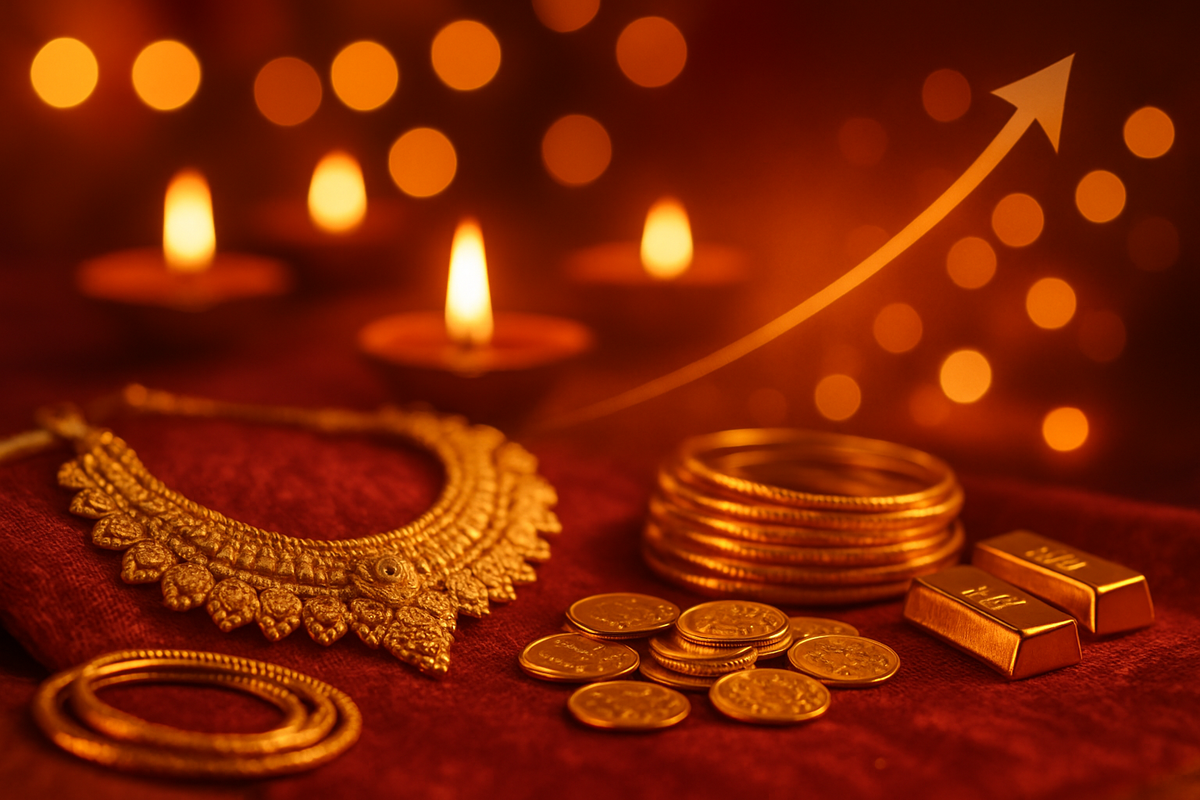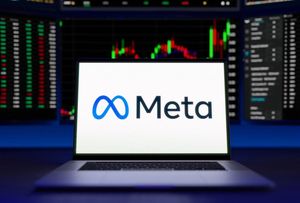
Mumbai, India – As the auspicious glow of Diwali permeates homes across India, gold has once again demonstrated its enduring allure, staging a remarkable rebound after a period of significant price correction. This resurgence, deeply rooted in both profound cultural traditions and astute market dynamics, underscores the precious metal's unique position in the Indian psyche and global financial landscape. The festival of lights, particularly Dhanteras, traditionally ushers in a surge in gold purchases, transforming perceived price dips into opportune moments for consumers to invest in prosperity and security.
This year's Diwali period has been a testament to gold's resilience, showcasing how strong domestic demand, coupled with its universal safe-haven appeal, can swiftly reverse downward trends. The rebound not only reflects the immediate buying fervor but also signals a broader confidence in gold as a store of value amidst ongoing economic uncertainties. For investors and market watchers, this performance provides crucial insights into the interplay of cultural imperatives and market forces that continue to shape the trajectory of this ancient asset.
The Auspicious Surge: Unpacking Gold's Diwali Revival
Gold's recent rebound during the Diwali period is a compelling narrative of cultural significance meeting market opportunity. Following a period where prices had experienced a notable plunge from their peaks, many analysts speculated on the immediate future of the precious metal. However, as the calendar turned towards the revered festival, Indian consumers, long-standing pillars of global gold demand, swiftly re-entered the market, viewing the lower prices as an irresistible invitation to partake in the auspicious tradition of buying gold.
The timeline leading up to this moment typically involves a build-up of consumer sentiment. When global economic headwinds or interest rate hikes by central banks (like the US Federal Reserve) lead to a strengthening dollar and a subsequent dip in gold prices, Indian consumers often adopt a wait-and-watch approach. However, as Diwali approaches, particularly the day of Dhanteras, the cultural imperative to purchase gold for prosperity and good fortune overrides price concerns. This year, the perceived "discount" offered by the earlier price plunge acted as a catalyst, igniting a buying frenzy. Key players in this resurgence include millions of Indian households, local jewelers, and global bullion dealers. Initial market reactions saw a noticeable uptick in gold sales volumes and values, particularly in physical gold (coins, bars, and jewelry), with many jewelers reporting robust foot traffic and online sales. The World Gold Council often highlights India's festival season as a critical period for global gold demand, and this year's rebound further solidifies that trend, demonstrating the market's intrinsic ability to absorb price corrections when cultural factors align. Furthermore, sustained accumulation by central banks globally, including the Reserve Bank of India, has also provided a strong underlying support for gold prices, reinforcing its long-term value proposition.
Companies Poised for Gains and Losses Amidst Gold's Resurgence
The spirited rebound of gold during Diwali carries significant implications for a diverse array of public companies, creating distinct winners and losers across the financial ecosystem. The primary beneficiaries are undoubtedly jewelry retailers and gold refiners. Companies like Titan Company (NSE: TITAN), a prominent Indian lifestyle company with a significant presence in jewelry through its Tanishq brand, are likely to experience substantial revenue boosts. Their sales volumes, particularly for traditional and investment-oriented gold products, typically surge during the festive season. Similarly, other listed Indian jewelers such as Rajesh Exports (NSE: RAJESHEXPO) and PC Jeweller (NSE: PCJEWELLER) would see increased demand translating into healthier balance sheets. These companies benefit directly from the cultural drive to purchase gold, especially when prices are perceived as favorable after a dip.
On the flip side, gold mining companies might experience a more nuanced impact. While higher gold prices generally benefit miners by increasing their revenue per ounce, a rapid rebound driven primarily by short-term consumer demand might not immediately translate into higher production or exploration budgets. However, companies like Barrick Gold Corporation (NYSE: GOLD) or Newmont Corporation (NYSE: NEM), which operate globally, could see improved profitability if the price rally sustains. Gold-backed Exchange Traded Funds (ETFs), such as SPDR Gold Shares (NYSEARCA: GLD), also tend to gain as investor confidence in gold grows, attracting new capital and increasing their Net Asset Value (NAV). Conversely, companies heavily reliant on discretionary consumer spending on non-essential items might face some indirect competition for consumer wallets, though gold's unique cultural standing often places it in a separate category of essential festive purchases in India.
Broader Significance: Gold's Enduring Role in Global Markets
Gold's Diwali rebound extends beyond mere festive sales, signaling broader trends and implications for the global financial landscape. This event underscores gold's unparalleled role as a cultural anchor and a robust safe-haven asset, especially in emerging markets like India. It highlights how deeply ingrained traditions can act as a powerful counter-cyclical force, driving demand even when conventional market indicators might suggest caution. This phenomenon fits into a wider industry trend where physical gold demand, particularly from Asia, continues to be a significant price driver, often offsetting fluctuations in Western investment demand.
The ripple effects are considerable. For competitors in the investment space, gold's consistent performance during periods of uncertainty and cultural significance reaffirms its unique position, potentially drawing capital away from other asset classes. Partners in the gold supply chain, from refiners to logistics providers, experience increased activity and profitability. From a regulatory or policy perspective, governments, especially in gold-importing nations like India, closely monitor such surges. Policies related to import duties, hallmarking standards, and anti-money laundering measures are often influenced by the volume and value of gold transactions. Historically, similar patterns of heightened demand during festivals have been observed for centuries, demonstrating gold's enduring appeal across diverse economic cycles. For instance, during periods of high inflation or currency depreciation, gold has consistently served as a reliable store of value, a historical precedent that continues to inform current consumer and institutional behavior.
What Comes Next: Navigating Gold's Future Trajectory
Looking ahead, gold's strong Diwali performance sets the stage for several short-term and long-term possibilities. In the short term, the immediate post-Diwali period might see some profit-taking or a slight cooling of demand as the festive fervor subsides. However, the underlying strength demonstrated during the rebound suggests that any significant price corrections could again be met with renewed buying interest, particularly from long-term investors and those eyeing future auspicious occasions like weddings. Geopolitical tensions, global economic growth forecasts, and central bank monetary policies will continue to be critical factors influencing price volatility.
In the long term, gold is likely to maintain its upward trajectory, bolstered by persistent inflation concerns, ongoing geopolitical instability, and continued central bank diversification away from fiat currencies. This could necessitate strategic pivots for jewelry retailers, who might focus more on innovative, lighter-weight designs to cater to budget-conscious consumers while maintaining the cultural appeal. For gold miners, sustained higher prices could incentivize increased exploration and production. Market opportunities may emerge in digital gold platforms and gold-backed financial products, offering modern avenues for investment that align with traditional preferences. Challenges include potential regulatory hurdles, such as increased import duties, which could impact demand and pricing. Potential scenarios range from a sustained bull run driven by safe-haven demand to more moderate growth influenced by supply-demand dynamics and economic recovery.
A Golden Horizon: Key Takeaways and Future Outlook
Gold's remarkable rebound during the Diwali period is a powerful affirmation of its dual identity: a deeply cherished cultural artifact and a resilient financial asset. The event vividly illustrates how the confluence of auspicious traditions and strategic market timing can ignite significant demand, even after a price downturn. Key takeaways include the enduring strength of Indian consumer demand, which acts as a vital floor for global gold prices, and gold's consistent role as a hedge against economic uncertainty and inflation.
Moving forward, the market for gold appears robust, underpinned by both cultural imperatives and fundamental economic drivers. While short-term fluctuations are inevitable, the long-term outlook remains positive, supported by central bank buying, investment demand, and geopolitical risks. For investors, the message is clear: gold continues to be a crucial component of a diversified portfolio. In the coming months, investors should closely watch global interest rate movements, inflation data, and geopolitical developments, as these will significantly influence gold's price action. Furthermore, monitoring consumer sentiment and import policies in major gold-consuming nations like India will provide valuable insights into future demand trends. The Diwali rebound serves as a potent reminder that gold, with its unique blend of cultural heritage and financial security, is likely to continue shining brightly on the global stage.
This content is intended for informational purposes only and is not financial advice





